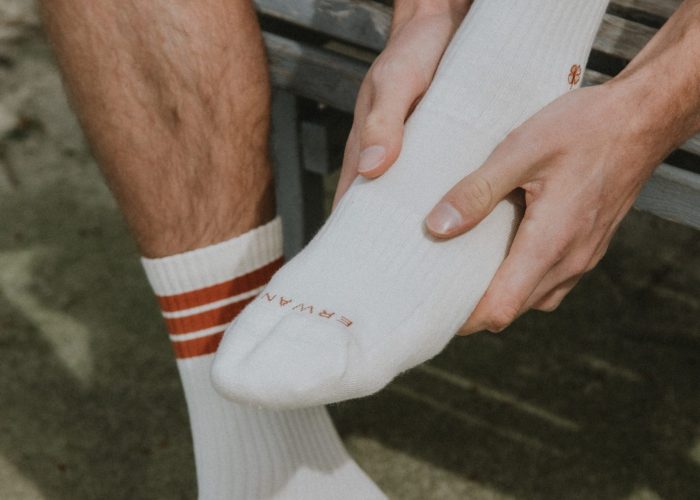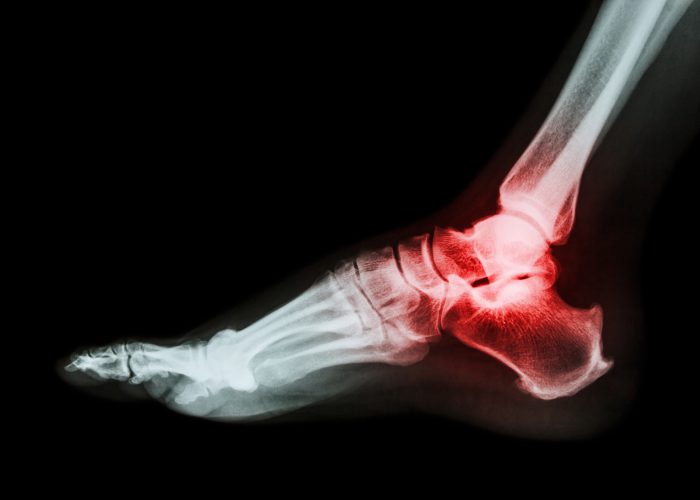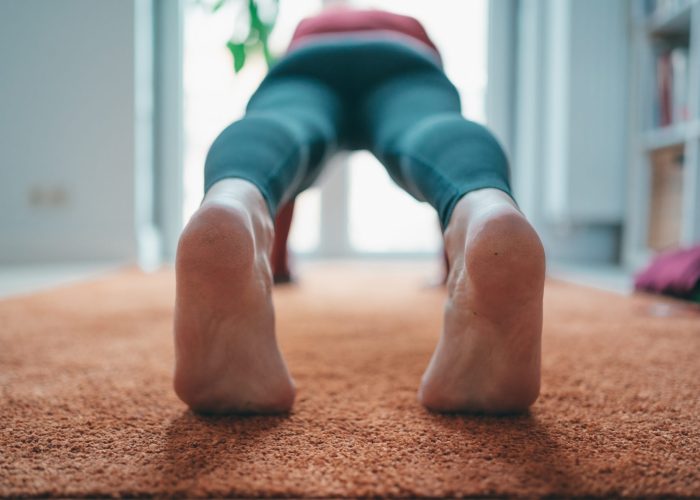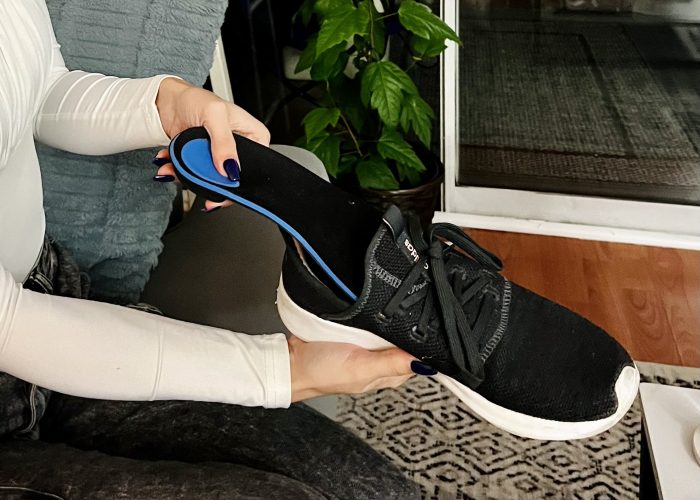Services
Many conditions can affect the foot and ankle, including unexpected injuries and chronic symptoms that develop over time. Scheduling regular appointments with your podiatrist and learning about your overall health are the best ways to stay on your feet. Every patient is different, but some conditions and treatments are common. Read below to learn about common injuries, conditions, and treatments involved in foot and ankle care.
Services
Many conditions can affect the foot and ankle, including unexpected injuries and chronic symptoms that develop over time. Scheduling regular appointments with your podiatrist and learning about your overall health are the best ways to stay on your feet. Every patient is different, but some conditions and treatments are common. Read below to learn about common injuries, conditions, and treatments involved in foot and ankle care.
Conditions
There are many conditions that can lead to complications with your feet and, often, your overall health. You should always wear socks, shoes, and, if necessary, ankle supports that fit well and provide stability. Shoes with traction help prevent falling and injuring yourself – especially during winter. Conditions that occur over time are best prevented by coming in immediately after an injury or at least once per year for a check-up.
Ankle Injuries
Most patients who injure an ankle do so by stepping on an object and twisting it. Twisted ankles commonly affect the ligament or cartilage, which may require days or months to heal depending on the severity. Rest, ice, compression, and physical therapy are useful remedies to help patients recover.
At Family Foot and Ankle Centers, P.C., we often attempt conservative treatments, like crutches, boots, and physical therapy, before planning for surgery. If the injury doesn’t improve, we may use an MRI to determine whether surgery is necessary.
“There are a lot of chronic conditions. Arthritis is probably the main one, and that could happen from an old injury that comes back.“ – Dr. Michael Ambroziak

Broken Bones
Trauma to the toes, feet, or ankles can cause bones to break or fracture. Common events that lead to bone complications include twisting an ankle or stubbing a toe. Sharp pain and swelling are common indications that a bone is broken.
X-rays administered by a foot and ankle specialist provide the clearest picture to identify a bone break or fracture. You should seek treatment soon after injury in order to increase the chance of a successful recovery. In addition, always choose to wear proper footwear to protect your feet from injury.
“Basically, for a broken bone to get better, you need to line it back up and keep it lined up.” – Dr. Jill Shink

Heel Pain
Several conservative options are available to treat heel pain. Cortisone injections, stretching, ice, massages, arch supports, and orthotics can be used to provide relief.
The two most common conditions we see at Family Foot and Ankle Centers, P.C. are plantar fasciitis and insertional achilles tendinitis. However, some conditions, like stress fractures, bone tumors, and bone cysts, can be painful and require x-rays to identify.
“The most significant thing you can do to prevent heel pain is stretch your calf muscles faithfully, nice and slow, for 30 seconds per leg, two to three times per day, to keep your calves loosened up.” – Dr. Michael Ambroziak

Other Conditions
- Foot and Ankle Arthritis
- Flat Feet
- Tendonitis
- Ingrown Toenails
- Neuropathy
- Plantar Fasciitis
Conditions
There are many conditions that can lead to complications with your feet and, often, your overall health. You should always wear socks, shoes, and, if necessary, ankle supports that fit well and provide stability. Shoes with traction help prevent falling and injuring yourself – especially during winter. Conditions that occur over time are best prevented by coming in immediately after an injury or at least once per year for a check-up.
Ankle Injuries
Most patients who injure an ankle do so by stepping on an object and twisting it. Twisted ankles commonly affect the ligament or cartilage, which may require days or months to heal depending on the severity. Rest, ice, compression, and physical therapy are useful remedies to help patients recover.
At Family Foot and Ankle Centers, P.C., we often attempt conservative treatments, like crutches, boots, and physical therapy, before planning for surgery. If the injury doesn’t improve, we may use an MRI to determine whether surgery is necessary.
“There are a lot of chronic conditions. Arthritis is probably the main one, and that could happen from an old injury that comes back.“ – Dr. Michael Ambroziak

Broken Bones
Trauma to the toes, feet, or ankles can cause bones to break or fracture. Common events that lead to bone complications include twisting an ankle or stubbing a toe. Sharp pain and swelling are common indications that a bone is broken.
X-rays administered by a foot and ankle specialist provide the clearest picture to identify a bone break or fracture. You should seek treatment soon after injury in order to increase the chance of a successful recovery. In addition, always choose to wear proper footwear to protect your feet from injury.
“Basically, for a broken bone to get better, you need to line it back up and keep it lined up.” – Dr. Jill Shink

Heel Pain
Several conservative options are available to treat heel pain. Cortisone injections, stretching, ice, massages, arch supports, and orthotics can be used to provide relief.
The two most common conditions we see at Family Foot and Ankle Centers, P.C. are plantar fasciitis and insertional achilles tendinitis. However, some conditions, like stress fractures, bone tumors, and bone cysts, can be painful and require x-rays to identify.
“The most significant thing you can do to prevent heel pain is stretch your calf muscles faithfully, nice and slow, for 30 seconds per leg, two to three times per day, to keep your calves loosened up.” – Dr. Michael Ambroziak

Other Conditions
- Foot and Ankle Arthritis
- Flat Feet
- Tendonitis
- Ingrown Toenails
- Neuropathy
- Plantar Fasciitis
Treatments
Family Foot and Ankle Centers, P.C. offers an array of treatment options ranging from stretching recommendations to surgical intervention. Schedule an appointment with one of our experienced podiatrists to determine an effective treatment plan.
Custom Orthotics
Custom orthotics and over-the-counter insoles aim to eliminate fatigue and burning pain in your foot by providing support to overworked muscles. While both can be beneficial, custom orthotics go a step further by realigning joints and rebalancing muscles with more precision.
“A custom orthotic is created from a mold of your foot in the position that your foot was intended to work,” says Dr. Jill Shink. “When all the joints are lined up, they won’t wear irregularly. That relieves forces that cause arthritis.”
Anyone with foot pain or deformities can usually benefit by wearing orthotics. They can treat several conditions, including bunions, hammertoes, pain caused by flat feet, tendonitis, calluses, and sometimes ulcerations.
“When we make custom orthotics, we work with the patient throughout the process. Since they are more rigid and supportive than over-the-counter insoles, we have patients get used to them by wearing them for an hour, taking them out, then wearing them longer the next day.”

Diabetic Foot Care
Diabetes can affect the feet in many ways. Some immediately identifiable symptoms are skin coloration, swelling, and dryness. During an appointment with a diabetic patient, we carefully evaluate each foot’s appearance, circulation, reflexes, and sensory ability.
Neuropathy in diabetics can lead to serious conditions in a variety of ways. Sensory neuropathy manifests as numbness, tingling, burning, or pain in your feet. This can prevent you from noticing if you stub your toe or cut yourself. Injuries left unnoticed and untreated then get infected and lead to further complications. Like most offices, we perform a monofilament test to scan for sensory neuropathy.
Motor neuropathy refers to muscle weakness in the feet which can lead to hammertoes and flat feet. Additionally, autonomic neuropathy disrupts your body’s natural ability to lubricate skin, grow hair, and heal.
“The goal is to identify potential problems and prevent them from happening,” says Dr. Michael Ambroziak. “This can be done with proper footwear and education, but it can get pretty complicated.
“Once you start to develop an ulcer or get an infection, it becomes a full-body disease. Now we’re counting on your immune system and circulation to carry antibiotics and oxygen to the wound to heal properly.”
It’s important to prevent complications caused by diabetes by regularly visiting your family physician, following a proper diabetic diet, and taking medications as directed. Keep your blood sugar under control (hemoglobin A1C under 7 is ideal for most) and DO NOT smoke.

Foot and Ankle Surgery
Unless a patient’s life is threatened (usually due to infection), it is always their decision whether to proceed with surgery. Most of the time, patients are unaware of the many conservative options available to treat their condition before surgery is considered.
“I always work with the patient and educate them about the surgical process and post-op recovery, which may be much less intense than they originally thought,” says Dr. Jill Shink. “It’s always their decision if they want to deal with the pain due to their condition versus having the surgery.”
At Family Foot and Ankle Centers, P.C., we consider surgery an effective option after all conservative measures have been exhausted or the patient is ready to proceed to the next level of treatment.

Additional Treatments
- In-house X-rays
- Sports Medicine
- Localized Cortisone Injections
- Pain-relieving Pads
- Wart Treatment
- Wound Care
Treatments
Family Foot and Ankle Centers, P.C. offers an array of treatment options ranging from stretching recommendations to surgical intervention. Schedule an appointment with one of our experienced podiatrists to determine an effective treatment plan.
Custom Orthotics
Custom orthotics and over-the-counter insoles aim to eliminate fatigue and burning pain in your foot by providing support to overworked muscles. While both can be beneficial, custom orthotics go a step further by realigning joints and rebalancing muscles with more precision.
“A custom orthotic is created from a mold of your foot in the position that your foot was intended to work,” says Dr. Jill Shink. “When all the joints are lined up, they won’t wear irregularly. That relieves forces that cause arthritis.”
Anyone with foot pain or deformities can usually benefit by wearing orthotics. They can treat several conditions, including bunions, hammertoes, pain caused by flat feet, tendonitis, calluses, and sometimes ulcerations.
“When we make custom orthotics, we work with the patient throughout the process. Since they are more rigid and supportive than over-the-counter insoles, we have patients get used to them by wearing them for an hour, taking them out, then wearing them longer the next day.”

Diabetic Foot Care
Diabetes can affect the feet in many ways. Some immediately identifiable symptoms are skin coloration, swelling, and dryness. During an appointment with a diabetic patient, we carefully evaluate each foot’s appearance, circulation, reflexes, and sensory ability.
Neuropathy in diabetics can lead to serious conditions in a variety of ways. Sensory neuropathy manifests as numbness, tingling, burning, or pain in your feet. This can prevent you from noticing if you stub your toe or cut yourself. Injuries left unnoticed and untreated then get infected and lead to further complications. Like most offices, we perform a monofilament test to scan for sensory neuropathy.
Motor neuropathy refers to muscle weakness in the feet which can lead to hammertoes and flat feet. Additionally, autonomic neuropathy disrupts your body’s natural ability to lubricate skin, grow hair, and heal.
“The goal is to identify potential problems and prevent them from happening,” says Dr. Michael Ambroziak. “This can be done with proper footwear and education, but it can get pretty complicated.
“Once you start to develop an ulcer or get an infection, it becomes a full-body disease. Now we’re counting on your immune system and circulation to carry antibiotics and oxygen to the wound to heal properly.”
It’s important to prevent complications caused by diabetes by regularly visiting your family physician, following a proper diabetic diet, and taking medications as directed. Keep your blood sugar under control (hemoglobin A1C under 7 is ideal for most) and DO NOT smoke.

Foot and Ankle Surgery
Unless a patient’s life is threatened (usually due to infection), it is always their decision whether to proceed with surgery. Most of the time, patients are unaware of the many conservative options available to treat their condition before surgery is considered.
“I always work with the patient and educate them about the surgical process and post-op recovery, which may be much less intense than they originally thought,” says Dr. Jill Shink. “It’s always their decision if they want to deal with the pain due to their condition versus having the surgery.”
At Family Foot and Ankle Centers, P.C., we consider surgery an effective option after all conservative measures have been exhausted or the patient is ready to proceed to the next level of treatment.

Additional Treatments
- In-house X-rays
- Sports Medicine
- Localized Cortisone Injections
- Pain-relieving Pads
- Wart Treatment
- Wound Care